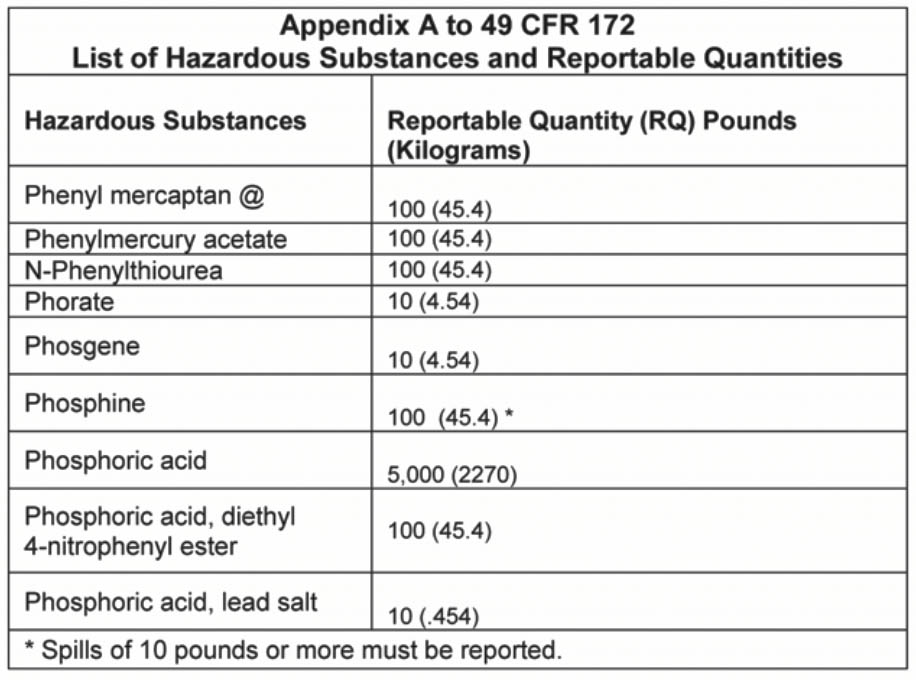Note: Your are not logged in. We can not keep your scores or track your progress unless you Register and Log In
List of Hazardous Substances and Reportable Quantities
Appendix A to 49 CFR 172.101 - The List of Hazardous Substances and Reportable Quantities.

The DOT and the EPA want to know about spills of hazardous substances named in the List of Hazardous Substances and Reportable Quantities. (See Figure 9.5.) Column 2 of the list shows each product's reportable quantity (RQ). When these materials are being transported in a reportable quantity or greater in one package, the shipper displays the letters “RQ” on the shipping paper and package. The letters “RQ” may appear before or after the basic description. You or your employer must report any spill of these materials that occurs in a reportable quantity.
If the words INHALATION HAZARD appear on the shipping paper or package, the rules require the display of the POISON INHALATION HAZARD or POISON GAS placards, as appropriate. These placards must be used in addition to other placards, which may be required by the product's hazard class. Always display the hazard class placard and the POISON INHALATION HAZARD placard, even for small amounts.
Appendix B to 49 CFR 172.101—List of Marine Pollutants.
Appendix B is a listing of chemicals that are toxic to marine life. For highway transportation, this list is only used for chemicals in a container with a capacity of 119 gallons or more without a placard or label as specified by the HMR.
Any bulk packages of a Marine Pollutant must display the Marine Pollutant marking (white triangle with a fish and an “X” through the fish). This marking (it is not a placard) must also be displayed on the outside of the vehicle. In addition, a notation must be made on the shipping papers near the description of the material: “Marine Pollutant.”
Multiple-Choice Questions:
What does it mean if you have a reportable quantity (RQ) of a hazardous material?
- You must report spills of these materials only if they have the potential to leak into drains, sewers, ponds, rivers, or other bodies of water
- You or your employer must report any spill of these materials that occurs in a reportable quantity.
- They do not require you to report any spills of these materials
- You must report any spills of 10% or more of the total materials you are carrying of that product
What must you do if the words INHALATION HAZARD appear on the shipping paper or package?
- You must display the POISON INHALATION HAZARD or POISON GAS placards
- Display all additional placards that are required beyond the POISON INHALATION HAZARD or POISON GAS placards
- All these are correct
- Always display the hazard class placard and the POISON INHALATION HAZARD placard, even for small amounts.
Complete!
You can Return To The Table Of Contents







 TT On Facebook
TT On Facebook